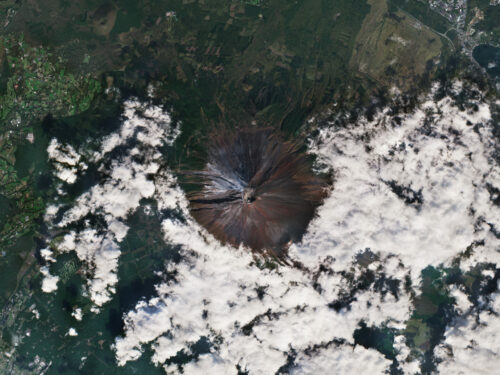

Mount Fuji, Japan’s highest peak, has seen its first snowfall after one of the longest periods without snow since records began 130 years ago.
The Copernicus Sentinel-2 mission captured this image of Mount Fuji’s iconic snowcap on Nov. 7, 2024, a day after snow was first spotted by the Japan Mereological Agency’s Shizuoka branch.
Sentinel-2 carries a high-resolution multispectral imager to deliver optical images from the visible to the shortwave-infrared region of the electromagnetic spectrum.
Image Credit: Contains modified Copernicus Sentinel data (2024), processed by ESA